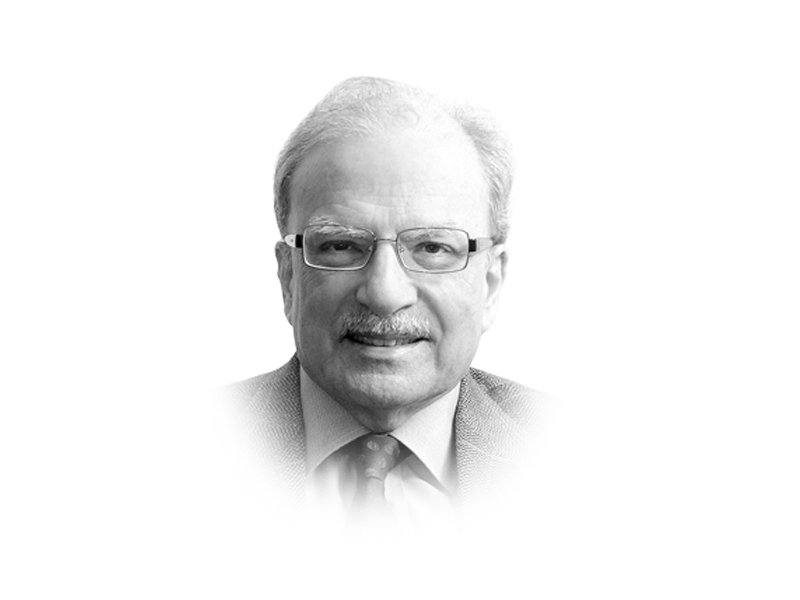
The world seems to be headed towards another Cold War. This one will be very different from the one that began soon after the end of the World War II and lasted for almost four decades. It ended with the weakening of the Soviet Union following its misguided occupation of Afghanistan. The Soviet troops did not expect a hard fight in the country they had easily occupied, but that is what they got. The followers of conservative and tribal Islam – and they constituted the country’s majority – had no appetite for the Soviet-style communism which they branded godless. Helped by the United States, Saudi Arabia and Pakistan, half a dozen groups of Afghan mujahideen inflicted heavy human and material losses on the Soviet Union. Under its leader, Michael Gorbachev, Moscow decided that these were unsustainable losses. It decided to pull out its troops, which it did in 1989, a decade after it had entered Afghanistan. Two years of the Afghan debacle led to the collapse of the Soviet Union.
The countries Moscow had assembled under the umbrella of the Soviet Empire won independence and the political union Vladimir Lenin and Joseph Stalin had built shrank back to just Russia. The United States’ victory was celebrated by a number of academics and policy analysts, most notably the sociologist, Francis Fukuyama. His book, The End of History, quickly became a best-seller. History had ended since the Western democratic and capitalist liberalism had firmly established themselves as the forms of political and economic governance the people wanted all across the world. These systems had developed over centuries of trial and error. They were the only ones that gave voice and participation to all segments of the citizenry.
In his later and more elaborate world – a two volume study on political development and political decay – Fukuyama elaborated on how long an effort it really was to build solid institutions that promised popular participation and therefore popular support. It took hundreds of years for Europe and the United States to reach the point of political development where they are today. Even now, stresses can develop, as they have while America prepared to elect the next resident of the White House and Britain debated whether to remain with the European Union or to leave.
The development of liberal political order was challenged twice in the 20th century by other forces and both social nationalism, the philosophy that brought Adolf Hitler to power in Germany and Benito Mussolini in Italy, and communism started as popular movements. They grew out of general discontent but were captured and twisted by charismatic leaders. They believed that in order to survive and spread, they had to fight Western liberalism. This led first to World War II and then to the long drawn-out Cold War. What kept the Cold War from becoming “hot” was the fact that the antagonists possessed weapons of mass destruction. The destructive power of nuclear weapons was demonstrated tragically and vividly when President Harry Truman, the American president, decided to drop two atom bombs on Japan, one on Hiroshima and the other on Nagasaki. The sudden destruction and death visited on Japan forced Tokyo to sue for peace. Within a few months of surrender, the Japanese chose to adopt the Western style of governance for both economics and politics. Over the years, the country was to become a powerful member of the club of advanced Western nations.
This historical background helps to understand the circumstances that led to the launch of a new kind of Cold War, how it might be conducted and the direction in which it could go. The current conflict is different from the one which engaged the world for most of the second half of the 20th century. The most important contributing factor is the loss of confidence in the United States and the sense that it may not be able to influence world affairs as it had done when, after the collapse of the Soviet Union, it had the field entirely to itself. This has happened while another large economic power, China, has begun to assert itself, in particular in its neighbourhood. The initial competition between the two is over the Pacific – the ocean as well as the countries located on its rim. In October 2015, the International Monetary Fund, using the “purchasing power parity” methodology, concluded that by the end of the year, China would have overtaken the United States in terms of the size of the economy.
This finding came a couple of years after a new leader was appointed to head the all-powerful Chinese Communist Party, the Chinese state and the rapidly expanding Chinese military. Xi Jinping was prepared to use all the powers in his command to protect what he believed were his country’s strategic interests. He redefined China’s interests in the Pacific, in particular, in the East and South China Seas. These moves were interpreted by Washington as threats to the openness of the busy sea lanes in the Pacific. President Barack Obama, as a part of what he called his country’s “pivot to Asia,” began to build an alliance of Asian states to counter what he and his Administration saw as China’s hegemonic moves. In this effort, he recruited India to side with the United States. The new Cold War had thus arrived on the shores of South Asia.
Published in The Express Tribune, June 27th, 2016.
Like Opinion & Editorial on Facebook, follow @ETOpEd on Twitter to receive all updates on all our daily pieces.





























































COMMENTS (6)
Comments are moderated and generally will be posted if they are on-topic and not abusive.
For more information, please see our Comments FAQ